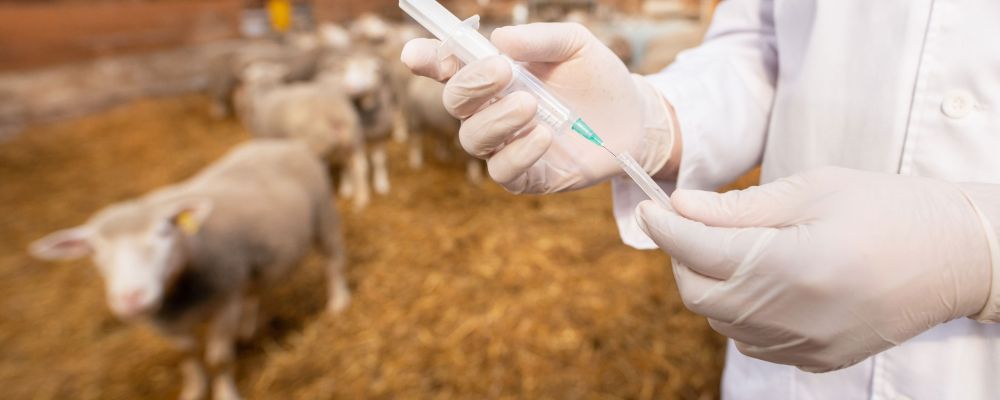- The ANMV
- Our activities
- Administrative formalities
- Our Publications
- Europe & International
- Europe
- International
- World Organisation for Animal Health (WOAH)
- International harmonisation of technical requirements for the registration of veterinary medicinal products (VICH)
- Pharmaceutical inspection cooperation scheme (PICs)
- Organisation for Economic Co-operation and Development (OECD)
- Codex Alimentarius
- Cooperation agreements
- E-learning module
Portal Veterinary medicinal products

Monitoring of sales of veterinary antimicrobials
Antimicrobial resistance is a major public health problem for both human and veterinary medicine. The monitoring of sales of antibiotics for veterinary use is one essential source of information used for the assessment and management of antimicrobial resistance risks. Since 1999, the Agency has set up an annual monitoring of the sales of veterinary antibiotics, which is based on the recommendations of the World Organisation for Animal Health.
In addition, since 2010, France, via Anses, has been participating in the European Surveillance of Veterinary Antimicrobial Consumption (ESVAC), project initiated by the European Medicines Agency (EMA) at the request of the European Commission. The aim is to collect harmonised antibiotic sales data in all EU countries. In 2022, the collection of data on sales of veterinary medicinal products was extended to all antimicrobials (including antibiotics, antifungals and antiprotozoals).
Read the report "Sales survey of veterinary medicinal products containing antimicrobials in France in 2022"
The monitoring of sales of antibiotics in veterinary medicine makes it possible to evaluate their use and to monitor the evolution of antibiotic therapy practices in different animal species.
The information collected is one of the essential elements, together with the monitoring of bacterial resistance, to enable an assessment of the risks associated with antibiotic resistance.
This information also makes it possible to propose measures to manage this risk and to monitor their effects.
The monitoring of sales of antibiotics for veterinary use is based on an annual declaration of the sales of antibiotics by the laboratories that market them. Declarations include an estimated breakdown of sales by animal species. These data may be cross-checked with other sources of information (declaration of turnover, prescription investigations, etc.).
The information collected from Marketing Authorization Holders covers 100 % of authorised veterinary medicinal products and makes it possible to estimate to which species they have been prescribed.
The volumes of antibiotic sales do not accurately reflect their use. Recent antibiotics are more active and require the administration of a lower amount of product. In order to assess the exposure of animals to antibiotics, it is necessary to take into account in particular the dosage and duration of administration, but also the evolution of the animal population over time. The ALEA (Animal Level of Exposure to Antimicrobials) estimates the level of exposure of animals to antibiotics.
The first Ecoantibio 2012-2016 plan aimed to reduce antibiotic use by 25 % in 5 years, paying particular attention to the use of critical antibiotics in veterinary and human medicine. These antibiotics are used when those prescribed in the first instance are ineffective. The overall target of the first plan was achieved with a 37 % reduction in animal exposure to antibiotics in 5 years.
The Future Law for Agriculture, Food and Forestry (LAAAF2, Law No 2014-1170 of 13 October 2014) has added specific objectives for antibiotics of critical importance in human medicine.
It has thus set a target of 25 % reduction in the use of antibiotics belonging to the families of Fluoroquinolones and 3rd and 4th generation Cephalosporins in three years, 2013 being the reference year. This target was achieved and largely exceeded in 2016.
The second EcoAntibio 2017-2022 plan aims to include in the long term the decrease in exposure of animals to antibiotics. It provides actions for communication and training, for access to alternatives to antibiotics and the improvement of animal diseases prevention. A specific target for colistin, an antibiotic frequently used in veterinary medicine and reserved in human medicine for severe cases, aims at a 50 % reduction in exposure to this antibiotic in five years in the bovine, porcine and poultry sectors.
The coordination at European level on the monitoring of sales of antibiotics in veterinary medicine was established in 2010 at the EMA (European Medicines Agency) .
In 2020, France was the 14th most consumer country out of 31 participating countries (source ESVAC), with consumption far below the European average (56.6 mg/kg vs. 89.0 mg/kg).